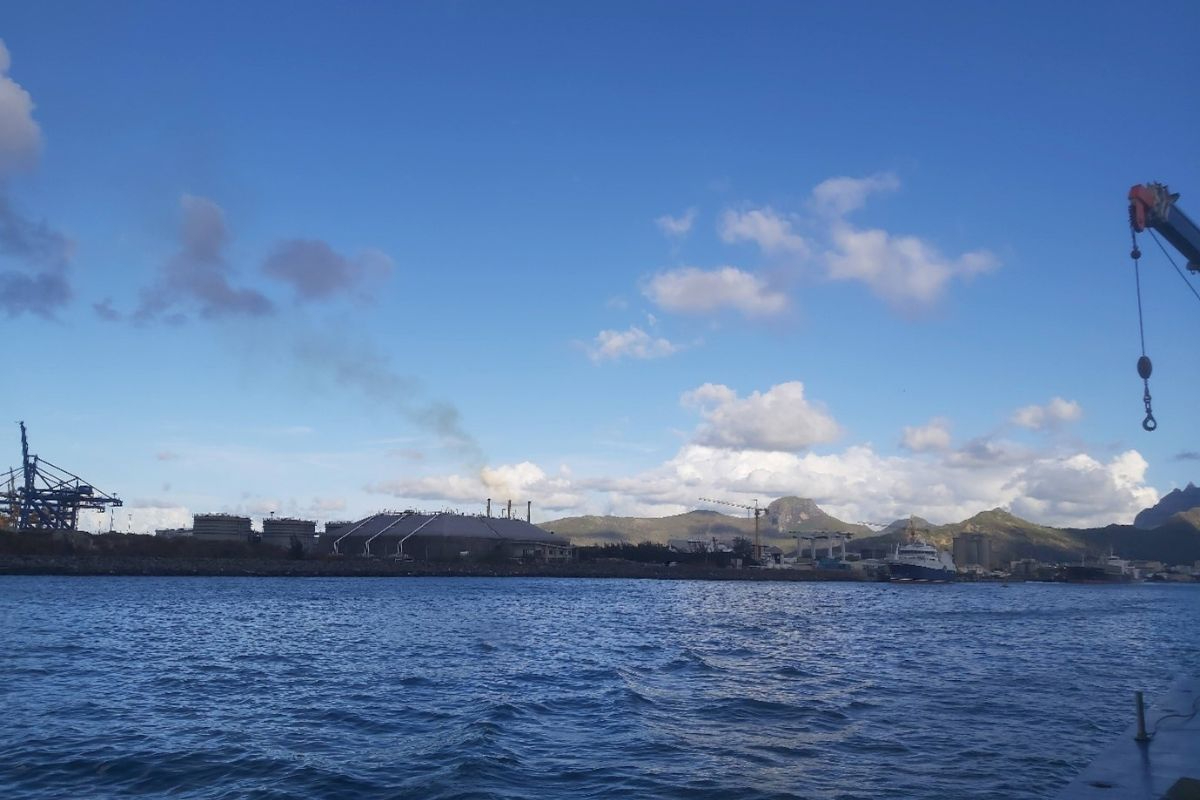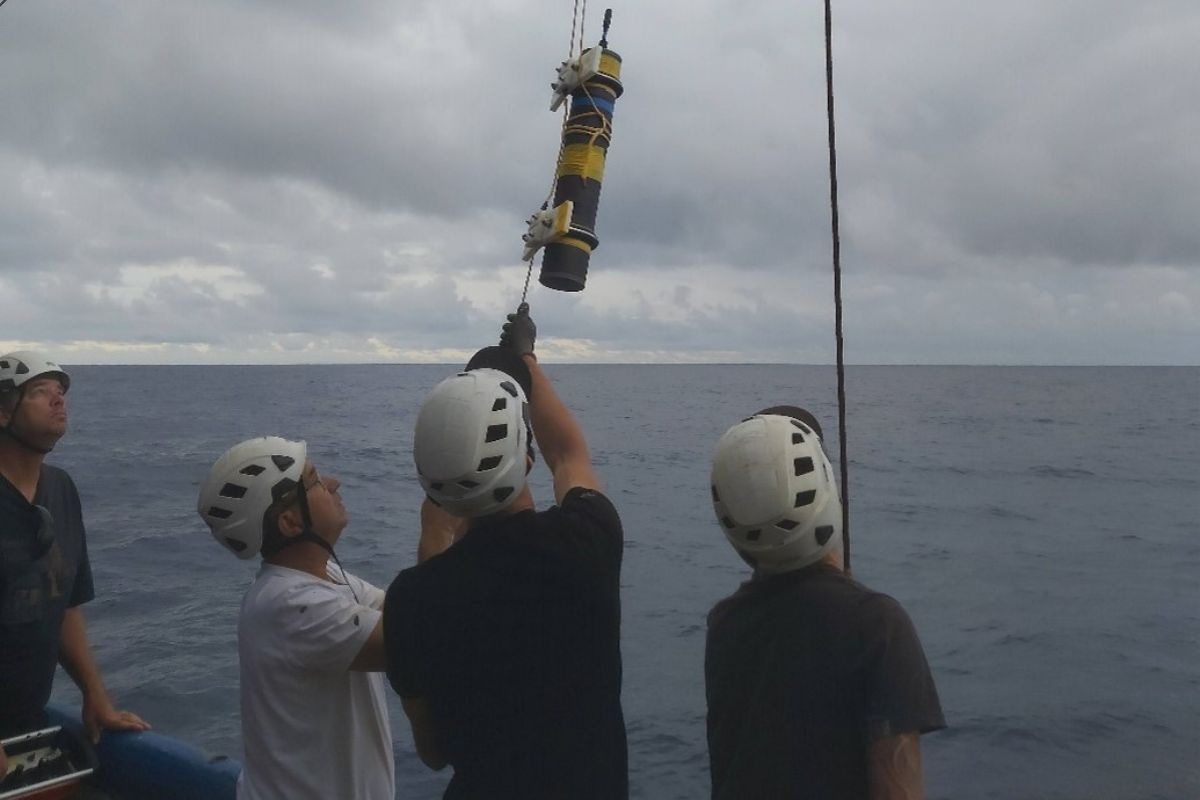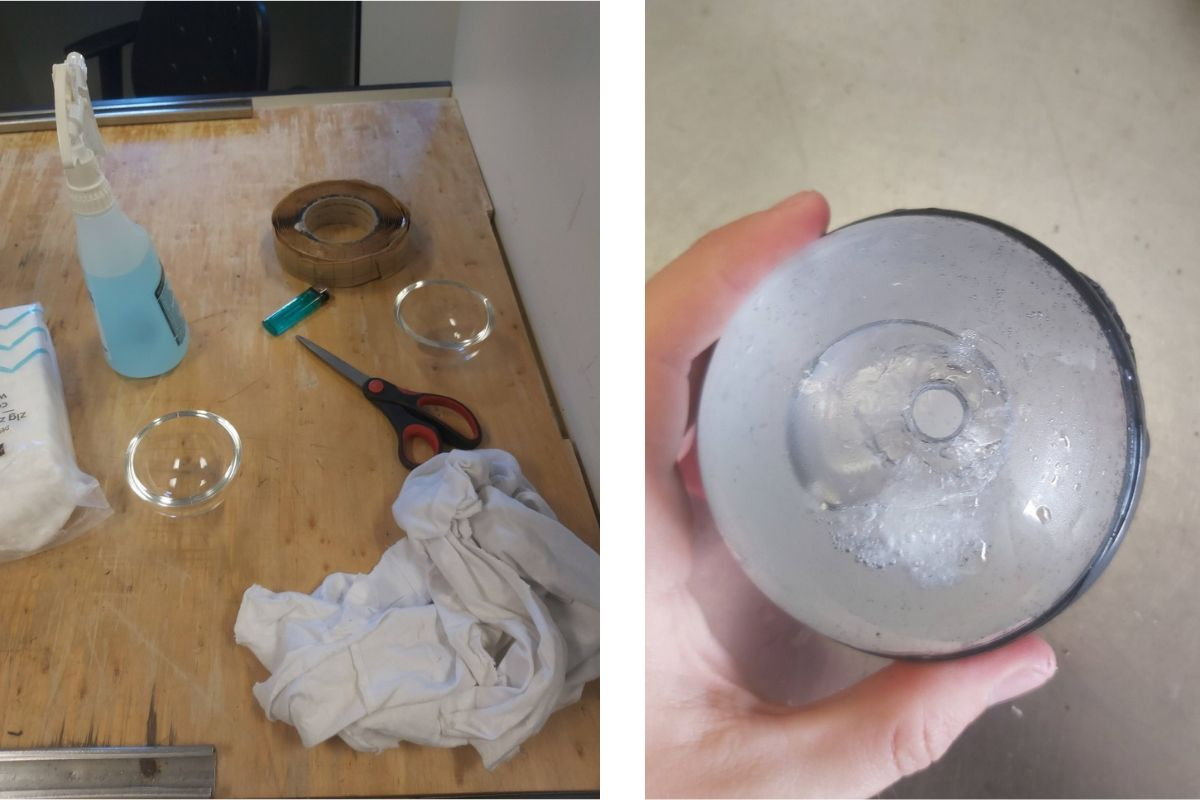With the AQUA Expedition from 4-17 January 2023, we sailed from Mauritius to Cape Town where we measured the propagation loss through the SOFAR channel at 1000 m depth. The goal was to isolate the contribution of sound absorption that is altered by climate related effects, especially at low sound frequencies (<1 kHz). To create a loud sound source at a depth of 1000 m we designed new equipment called the spherecracker. This device was able to generate a loud bang (>200 dB) that was heard by a hydrophone (an underwater microphone) 100 km away from the bang. Together with the acoustic data we measured the sound speed profiles and seawater chemistry. The data from this expedition will be combined with data from future expeditions in locations with different water chemistry with the intend to isolate the effect of water chemistry on sound propagation and in particular sound absorption. We will then be able to better understand the connection between changes in ocean chemistry and climate change.
The AQUA project started in 2021. Our first expedition on Pelagia was from the Azores to Iceland (https://www.nioz.nl/en/blog/niozatsea-aqua-expedition-from-azores-to-iceland) where we deployed a buoy equipped with three hydrophones at different depths to measure the ship's sound level at different distances. The data analysis showed that the sound spectrum differed over the same deployment and the ship noise was often lower than ambient noise. This unanticipated variability in the sound source (by the ship) and elevated ambient noise required a rethinking of our initial experiment design.

The latest expedition started on the 4 January 2023 in Port Louis, Mauritius where Pelagia sailed towards Cape Town, South Africa. Before boarding the ship, we isolated the locations where the presence of so-called eddies was expected to be minimal. We wanted to avoid these eddies, where water moves in a circular motion similar to how air moves in a hurricane, because they can affect measurements of sound propagation. The first days of the expedition were used to assemble the 10 glass spheres and the acoustic buoy and test the hydrophones. The acoustic buoy was equipped with two hydrophones at water depths of 900 and 1000 m and a GPS beacon to continuously locate the buoy during the deployment. The hydrophones are placed at two different depths to isolate the interactions between different sound rays.

On 9 January 2023, we deployed the acoustic buoy and Pelagia sailed to 25, 50, 75 and 100 km from the buoy. At these distinct distances, Pelagia’s crew deployed the spherecracker built and designed by the National Marine Facilities (NIOZ-NMF). The device can break glass spheres in deep waters generating a high sound level that can be heard at great distances. The device is activated by a messenger released from the ship down a line that triggers a piston with a sharp point into the glass sphere. These spheres consist of a thick layer of glass, filled with air. During the expedition, the spherecracker was deployed at 1000 m depth and a hydrophone was installed 15 m lower on the same line to hear how loud the sound of an imploding sphere was. The 1000 m depth was selected to be in the so-called SOFAR channel where sound can travel over large distances (>2000 km). The SOFAR channel is generated by the presence of a sound speed minimum at 1000 m and it is present in the deep oceans.

During the expedition at this depth, we cracked 10 spheres generating a short and loud sound (> 200 dB) that was successfully recorded by the acoustic buoy’s hydrophones up to 100 km from the implosion. Together with the acoustic measurements we also performed two CTD casts where the buoy was deployed and at 100 km from the buoy. During the two CTD casts we measured temperature and salinity to derive two sound speed profiles and we collected discrete samples to measure seawater's total alkalinity (TA) and dissolved inorganic carbon (DIC) to calculate the water’s acidity (pH). After more than 24 hours of recordings, the acoustic buoy was successfully recovered on 10 January 2023 and Pelagia resumed its transit to Cape Town.

After the expedition, the recordings will be corrected for ambient noise to isolate the noise generated by the imploding spheres and derive the effect of sound absorption. This is possible because the hydrophone next to the spherecracker measured the sound level generated by the cracked sphere and the hydrophones on the acoustic buoy measured the sound level at distance. The field measurements will be integrated with TNO’s sound propagation models. In the SOFAR channel, sound can travel over large distances with little propagation loss and that mostly depends on geometrical spreading and sound absorption.
The dataset will be expanded with future expeditions in regions with different water chemistry than the Indian Ocean. The sound absorption computed with these datasets will allow us to validate the existing algorithms that can be implemented in ocean acoustic models. This will allow other scientists to predict the climate effect on the future ocean soundscapes helping policymakers to better manage the ocean environment and protect marine life.